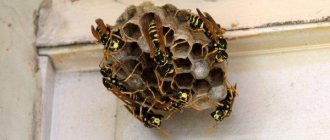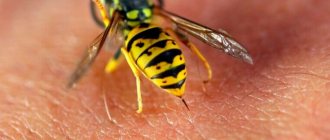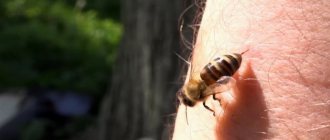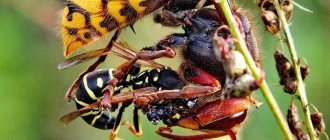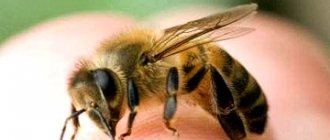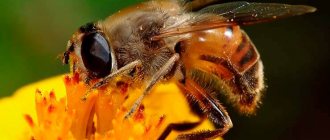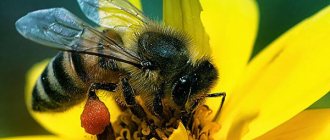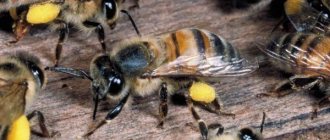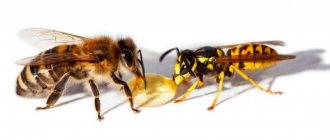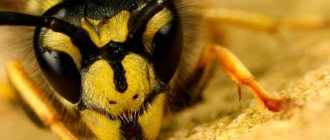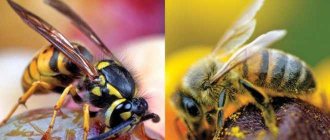What is the difference between a bee and a bumblebee? Appearance of insects, photo. How are nests built? What do bees and bumblebees eat? Hymenoptera honey production - why is bumblebee honey not used as a commercial product? Danger of insects for humans and children.
Bees and bumblebees are insects that belong to the Hymenoptera family. But, in addition to biological similarities, they have a number of differences. Let's figure out how they are similar and their differences in lifestyle, nutrition, attacks and danger.
general characteristics
Bees are flying insects that are common on all continents, with the exception of Antarctica. They feed on nectar and pollen, which are sources of nutrient energy.
The proboscis is used to obtain nectar. In addition, they are characterized by the presence of antennae divided into several segments. There are two pairs of wings, with the hind ones being smaller in size. The presented species of insects are indispensable pollinators for vegetation.
The bumblebee is not only closely related to honey bees, it belongs to this family. Among its characteristic features is the ability to tolerate cold, since the insect has the ability to warm up through frequent muscle contractions. They can fly early in the morning without waiting for the air temperature to warm up.
You can see a comparison of a wasp, a bee and a hornet in the photo. There are several characteristics that distinguish a bee from a bumblebee. How can you tell them apart?
What a bee, wasp, bumblebee and hornet look like
© manfredxy © pixabay © Getty Images Pro © Getty Images
Bee
The bees you are most likely to see near flowers are the smallest of all four.
. Their size on average varies from 6 mm to 2.5 cm. Their body is covered with small fluff, which helps them collect pollen. The color of bees is usually yellow with black stripes on the back.
Bumblebee
Bumblebees also belong to the bee family, but they have a more rounded and fluffy body. Unlike bees, which have a clear separation between their head and body, in bumblebees it looks more like one.
Wasp
Wasps are larger than bees. The size of wasps can reach an average of 1 to 2.5 cm. Their body is smooth and narrower than the body of bees. Wasps typically have a combination of black, yellow and orange rings.
Hornet
Hornets are actually a type of wasp, but they are larger than regular wasps. Some of them can reach a size of about 5 cm. There are red-brown hornets with yellow stripes on the belly or black ones with white rings.
Housing
Bee families are much larger than bumblebees; they usually build their nests inside tree hollows; domestic representatives live in hives. It is worth saying that they try to build honeycombs of the most correct shape possible.
Bumblebee colonies often settle underground, in litter. They can choose abandoned rodent burrows and bird nests built in bushes as their shelter. The shelter cells of bumblebees are not characterized by orderliness and symmetry, as in the situation with honeycombs.
Interesting Facts
These insects are interesting because they:
- Bees, after fertilizing the queen with males, attack them and expel them from the family. After this, they quickly die, as they cannot provide themselves with food.
- Wasps can also make honey, but no one has seen it. The microscopic volume of honey is located at the bottom of the cell. It is necessary so that the larvae have something to eat at first. After this, they switch to eating protein foods.
- Bumblebees appear on the inflorescences earlier than anyone else and begin to pollinate plants before anyone else.
- The hornet is a true predator that prefers to feed on live insects.
- A worker bee can transmit information to its relatives about where the food item is located.
Each insect has its pros and cons. Unfortunately, many people unjustifiably destroy insects, although absolutely useless living creatures do not exist in nature. If some species disappear, humanity simply will not be able to survive.
The Secret Life of Bumblebees
Honey - composition and quality
Each of the presented insect species is capable of producing honey, but it should be noted that the bee-made product is thick and can be stored for a long time.
But the product of bumblebee origin is liquid, characterized by a high level of saturation with sucrose, proteins, and mineral components, which begin to ferment when the temperature exceeds zero. Because of this, such honey is almost never used as a commercial honey.
Body measurements
In nature, there are species whose body length is almost the same, so using this characteristic it can be difficult to distinguish who is who. Despite this, general dimensions and body structure can indicate who we are talking about. This is another sign of how these insects can be distinguished.
Important fact! Despite the length of the body, the representative of the Bombus species always looks more massive than the graceful bees and wasps.
Cold season and wintering
Speaking about the difference in lifestyle, it is necessary to take into account that by the beginning of winter, the majority of bumblebees die. Only fertilized females remain alive and spend the winter in torpor.
If we take into account the bee family, then their vital activity continues in winter, of course, in the cold there is a slowdown in some processes that occur in the insect’s body. Before the cold begins, these workers begin to block the cracks in their own homes - this allows them to protect themselves from low temperatures and precipitation.
conclusions
If you follow the results of comparisons, it becomes clear that there are differences between a bee and a bumblebee. Bees are smaller in size and the color is much paler. They form a large family. To arrange the hive, bees build honeycombs of the correct shape. Bumblebees have characteristic hairs on their bodies; their honey is stored much worse than that of bees. During the winter period, only females remain in the bumblebee family, which will produce offspring with the onset of the warm season. Bees are able to overwinter and continue their life cycle again next year.
Differences in insect bites
It is not uncommon for a person to become a victim of a stinging insect. Because of this, many people wonder what the difference is in the bite of different species of Hymenoptera. The two creatures are characterized by the presence of a sting, but its use is carried out according to different principles.
The bee is distinguished by the presence of an uneven stinger, which has protruding serrations. In appearance they look like a harpoon. When attacked by insects, a sting is inserted into the skin, and a toxic substance enters the blood through a thin channel.
She tries to pull the sting out of the skin, but due to the uneven surface, this possibility is excluded. As a result of such efforts, it is torn off from the body along with the sac of poison; in addition, internal organs are torn off (in most cases this is the intestines). Such trauma leads to her death.
The wasp has a more advanced weapon - the sting is almost smooth and extremely sharp. Note that it is considered one of the sharpest instruments in the whole world. When a bite occurs, toxic components are also released, and each type is characterized by differences in composition.
Due to the peculiarities of the body shape, it is possible to attack the victim at any angle of inclination. After attacks, insects can easily remove weapons from the victim’s skin, after which they fly away or attack the person again.
A painful sensation appears after a bite not only due to damage to the skin, but due to the influence of the components of the poison, which provoke burning and itching. There is also a risk of an allergic reaction. The greatest discomfort and negative consequences are caused by hornet stings, followed by the bumblebee, wasp, and bee when comparing the degree of pain.
Compared to bees and bumblebees, wasps are the most nervous and aggressive. If you try to brush off the insect or simply don’t like the scent of the body, the wasp will use its sting. If we take into account all types of Hymenoptera, then the high frequency and pain sensations are characteristic of wasps. They can also bite painfully with their powerful jaws.
Since the wasp has a smooth sting, if it is released into the skin, it will not remain inside the wound, which makes it possible to use it an unlimited number of times - it can immediately attack again without any harm to its body. The venom leads to severe pain, burning, and swelling, especially in the case of bites from large individuals.
If the insect disappears from view after the attack, you can figure out who it was by considering the presence or absence of a sting in the affected area.
Bees value their own weapons, so they sting only when absolutely necessary. They can sting only once, after which they cripple their own body and die. The sting is serrated and will remain in the wound along with the back of the insect. But it is worth noting that the pain will not be so intense.
During the attack, the wasp and the bee feed to their relatives, who after some time will help him by attacking the offender. A bumblebee can do the same, but since they most often fly alone, a conflict with them can only end in a bite by one representative of the colony.
The bumblebee stings more strongly than the bee and paper wasp, but much weaker when compared to the hornet. They are characterized by a smooth sting, so it does not remain in the wound. To provoke bumblebees to display aggression, you need to try, since these representatives are much calmer than their relatives.
Behavior
The bumblebee is different in that it prefers to fly separately and, if disturbed, it will simply fly away and that’s it.
A bee, even if it is alone, can hover around an object. Finding out how dangerous this object is for her. However, she is unlikely to be able to bite if she does not wave her arms. Bees will attack in any case if the peace of the family or hive is disturbed.
The wasp is considered the most annoying insect and is capable of biting in the most harmless situation. Moreover, a wasp sting is characterized by sharp and severe pain.
Nest organization
Almost all types of hornets live in families, building nests. As a material for construction, they prefer rotten wood or thin bark (mostly birch), which they chew, mix with saliva, and from the resulting mass they sculpt nest walls and honeycombs. As a result, the hornet's nest looks as if it is made of cardboard or corrugated paper. This shell reliably protects the “tenants” from drafts, heat and cold weather.
Hornets can attach their nests to the ceiling, build them in a hole or hollow tree, hives abandoned by bees or old birdhouses. Preferred places to build nests are near apiaries, gardens and vegetable gardens.
The beginning of construction is laid by the womb: it is she who is the founder of the future home of the family and its main mistress. After wintering, she looks for a suitable place, makes several hundred on the basis of the future home, where she lays the first eggs. After some time, the first young workers appear and immediately begin to continue building the nest.
The nest is usually built from top to bottom, with a gradual increase in the number of tiers of honeycombs. The more such tiers, the more individuals can live in such a nest (it happens that there are up to 500 of the latter).
The hatched larvae are fed by adults with insects (flies, locusts, grasshoppers, beetles, bees and small wasps) chewed and mixed with saliva. They themselves feed on the juice of fruits or berries, sweet secretions of aphids, nectar and other foods containing sugar.
Hornets never return to their original home the next year. Every spring the female looks for a new place to build a nest.
These insects attack domestic bees, which is why beekeepers really dislike them.
Danger zone
Hornet, wasp, and bee are also included here. Children with allergies are at risk, of course, because they most often run around partially undressed (arms, legs, fingers), and they have a lot of curiosity, so sometimes unpleasant moments happen.
There is, of course, a chance that your pet or someone close to you will get a nasty bite.
Habitat
Domestic bees live in hives that humans build for them. Wasps are wild representatives, so they build their homes in trees, often in hollows. Bumblebees love more secluded places, one might say hidden from others, so they can choose an area in the ground to build a nest; less often, their houses are found in tree trunks and birdhouses. All representatives are found in different areas, this could be a forest, a summer cottage, a city park, or botanical gardens.
Hornets choose a variety of places to build nests; these can be the eaves of buildings, tree branches, hollows, or cracks in rocks. But wasps can make their home absolutely anywhere, on the branches of a bush, in the attic, in the stem of a plant, etc. The building material is tree bark, which they moisten with saliva, and it becomes soft; the nests they build look like thick paper.
Stings
The bee has serrations and a “lock” on the tip. This prevents the stinger from being removed from the victim's body. Therefore, the worker defending the nest dies after the attack. For this reason, bees attack themselves only if you climb into their hive.
Insects can easily remove bumblebee and wasp stings from the victim and use them again. The pain from a bumblebee, wasp and bee sting directly depends on their size. Moreover, the wasp often bites “just like that.” With a bumblebee, you have to try really hard to get it to sting.
Wasp giants
The danger increases if a person or animal is attacked by a hornet, the largest species of the aspen family. In temperate climates, the worker reaches 25 mm, and the queen reaches 35 mm.
Nests can be found near human habitation under the roofs of houses or barns. They are 100% predators, feed on other arthropods and feed the larvae with them.
They also include fruit juice in their diet, and do not ignore honey. For this reason, adult individuals cause great damage to apiaries, destroying their workers and robbing the hives
The severe consequences of injecting poison are explained not by its quantity, but by increased allergenicity
Only females are equipped with a three-millimeter sting, which can sting repeatedly. The poison contains histamines, toxins, the substance acetylcholine and other components that cause irritation of nerve fibers, palpitations and severe pain. An allergic reaction in this case is accompanied by severe swelling and can have unpredictable consequences. They are found much less frequently than the same vespids, and are less aggressive, they do not attack first. However, such a neighborhood in a country house or dacha is highly undesirable - an accidentally disturbed nest can turn into a tragedy. There is nothing useless in living nature - every species, including predatory ones, occupies a necessary ecological niche. And yet, if a wasp colony, and even more so a hornet colony, is found near human habitation, all measures must be taken to get rid of it.
Who bites harder?
The greatest aggression is inherent in hornets and wasps, which have a thin sting - they can use it a couple of times, while deeply piercing the skin. The bites are painful and burning, and the site of the attack becomes severely swollen. There is also a risk of causing an allergic reaction. Do not forget that the wasp gives a signal, so you may encounter a whole swarm of insects that continue to exist after being bitten.
It is more difficult to anger bees, but the sting remains in the wound. They can attack only once, as a result the bee will die. The blow is delivered only when there is great danger. The bites are not very painful.
Bumblebees are considered the most benevolent and can attack only in exceptional cases. The bites are also not very painful. Only the female has a sting; when bitten, it does not remain in the affected area of the skin. Severe allergies and increased body temperature may occur. Bites are very dangerous for children.
